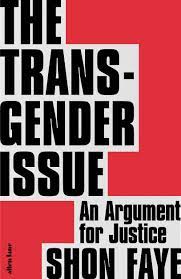 Servaas Storm over at INET:
Servaas Storm over at INET:
In the waning days of August, in a world beset by the unending COVID19 public health crisis, by increasingly frequent extreme climate events, and by the terrible news from Afghanistan, the world’s central bankers, the rich, and the influential gathered (online) for the Federal Reserve Bank of Kansas City’s annual Jackson Hole symposium. The title of this year’s Economic Policy Symposium was “Macroeconomic Policy in an Uneven Economy.” Few observers were paying attention and most had low expectations, knowing that central bankers are caught in a catch-22: they cannot lower interest rates (already at the zero-lower bound) to boost the economy, and they cannot raise rates, because the current high private and public debts are sustainable only at very low interest rates. Likewise, central bankers are unable to discontinue their accommodative (QE) policies, because this would abruptly end the irrational exuberance in financial markets and risk another global financial crash. Indeed, Fed chair Jay Powell’s speech was predictably careful, cautiously outlining how the Fed will continue its accommodative policy, while steadily monitoring data for signs of persistent broad-based inflation. No news from the monetary policy front, in other words.
However, one of the contributions to the symposium, a paper by Atif Mian, Ludwig Straub, and Amir Sufi (2021), managed to make headlines in the New York Times and the Financial Times (amongst others). The authors argue that high income inequality is the cause, not the result, of the low natural rate of interest r* and high asset prices evident in recent years. “As the rich get richer in terms of income, it creates a saving glut,” Professor Mian told the New York Times, “The saving glut forces interest rates to fall, which makes the rich even wealthier. Inequality begets inequality. It is a vicious cycle, and we are stuck in it” (Irwin 2021).
More here.

 Becca Rothfield in Boston Review:
Becca Rothfield in Boston Review: Adam Tooze at his podcast Ones and Tooze over at Foreign Policy:
Adam Tooze at his podcast Ones and Tooze over at Foreign Policy: Marco D’Eramo in NLR’s Sidecar (Photo by
Marco D’Eramo in NLR’s Sidecar (Photo by  In December 1915, while serving on the Russian front, the German astronomer and mathematician Karl Schwarzschild sent a letter to Albert Einstein that contained the first precise solution to the equations of general relativity. Schwarzschild’s approach had been simple. He had plugged Einstein’s equations into a model that posited an ideal, perfectly spherical star, in order to calculate how its mass would warp the surrounding space. Schwarzschild’s solution was elegant, but it revealed something monstrous: If the same process were applied not to an ideal star but to one that had begun to collapse, its density and gravity would increase infinitely, creating an enclosed region of space-time, or a singularity, from which nothing could escape. Schwarzschild had given the world its first glimpse of black holes.
In December 1915, while serving on the Russian front, the German astronomer and mathematician Karl Schwarzschild sent a letter to Albert Einstein that contained the first precise solution to the equations of general relativity. Schwarzschild’s approach had been simple. He had plugged Einstein’s equations into a model that posited an ideal, perfectly spherical star, in order to calculate how its mass would warp the surrounding space. Schwarzschild’s solution was elegant, but it revealed something monstrous: If the same process were applied not to an ideal star but to one that had begun to collapse, its density and gravity would increase infinitely, creating an enclosed region of space-time, or a singularity, from which nothing could escape. Schwarzschild had given the world its first glimpse of black holes. The
The  Wole Soyinka the firebrand activist is always getting Wole Soyinka the writer into trouble.
Wole Soyinka the firebrand activist is always getting Wole Soyinka the writer into trouble. You don’t encounter the fiction of Joy Williams without experiencing a measure of bewilderment. Williams, one of the country’s best living writers of the short story, draws praise from titans such as George Saunders, Don DeLillo, and Lauren Groff, and many of her readers, having imprinted on her wayward phrasing and screwball characters, will follow her anywhere. But the route can be disorienting, like climbing an uneven staircase in a dream. Her tales offer a dark, provisional illumination, and they make the kind of sense that disperses upon waking. For years, Williams has worn sunglasses at all hours, as if to blacken her vision. The central subject of art, she has written, is “nothingness.”
You don’t encounter the fiction of Joy Williams without experiencing a measure of bewilderment. Williams, one of the country’s best living writers of the short story, draws praise from titans such as George Saunders, Don DeLillo, and Lauren Groff, and many of her readers, having imprinted on her wayward phrasing and screwball characters, will follow her anywhere. But the route can be disorienting, like climbing an uneven staircase in a dream. Her tales offer a dark, provisional illumination, and they make the kind of sense that disperses upon waking. For years, Williams has worn sunglasses at all hours, as if to blacken her vision. The central subject of art, she has written, is “nothingness.”
 If you want to predict the future accurately, you should be an incrementalist and accept that human nature doesn’t change along most axes. Meaning that the future will look a lot like the past. If Cicero were transported from ancient Rome to our time he would easily understand most things about our society. There’d be a short-term amazement at various new technologies and societal changes, but soon Cicero would settle in and be throwing out Trump/Sulla comparisons (or contradicting them), since many of the debates we face, like what to do about growing wealth inequality, or how to keep a democracy functional, are the same as in Roman times.
If you want to predict the future accurately, you should be an incrementalist and accept that human nature doesn’t change along most axes. Meaning that the future will look a lot like the past. If Cicero were transported from ancient Rome to our time he would easily understand most things about our society. There’d be a short-term amazement at various new technologies and societal changes, but soon Cicero would settle in and be throwing out Trump/Sulla comparisons (or contradicting them), since many of the debates we face, like what to do about growing wealth inequality, or how to keep a democracy functional, are the same as in Roman times. Barack Obama was awarded the Nobel Peace Prize during his first year in the White House, but he also became the first U.S. president to be at war during the entirety of his two terms in office. The irony of this contrast has often been noted. To historian and legal scholar Samuel Moyn, it represents more than a case of poor judgment by the Nobel committee—or, as others might see it, an example of how the toxic politics surrounding terrorism can blunt the best of intentions.
Barack Obama was awarded the Nobel Peace Prize during his first year in the White House, but he also became the first U.S. president to be at war during the entirety of his two terms in office. The irony of this contrast has often been noted. To historian and legal scholar Samuel Moyn, it represents more than a case of poor judgment by the Nobel committee—or, as others might see it, an example of how the toxic politics surrounding terrorism can blunt the best of intentions. I’M NOT ONE FOR FLATTERY and hyperbole, especially when reacting to exhibitions. There is already enough sycophancy to go around on social media—even in the feeds of those who should know better. I am therefore going against every fiber of my being when I say that the Cézanne drawing show at New York’s Museum of Modern Art is unequivocally a once-in-a-generation not-to-be-missed event.
I’M NOT ONE FOR FLATTERY and hyperbole, especially when reacting to exhibitions. There is already enough sycophancy to go around on social media—even in the feeds of those who should know better. I am therefore going against every fiber of my being when I say that the Cézanne drawing show at New York’s Museum of Modern Art is unequivocally a once-in-a-generation not-to-be-missed event. The Testing of Luther Albright (2005) and Traps (2013) are perfectly good novels if one has a taste for it. The second thing that needs to be noted about them is that, after her divorce from Jeff Bezos, founder and controlling shareholder of Amazon, their author is the richest woman in the world, or close enough, worth in excess (as I write these words) of $60 billion, mostly from her holdings of Amazon stock. She is no doubt the wealthiest published novelist of all time by a factor of … whatever, a high number. Compared to her, J. K. Rowling is still poor.
The Testing of Luther Albright (2005) and Traps (2013) are perfectly good novels if one has a taste for it. The second thing that needs to be noted about them is that, after her divorce from Jeff Bezos, founder and controlling shareholder of Amazon, their author is the richest woman in the world, or close enough, worth in excess (as I write these words) of $60 billion, mostly from her holdings of Amazon stock. She is no doubt the wealthiest published novelist of all time by a factor of … whatever, a high number. Compared to her, J. K. Rowling is still poor.  ELIZABETH HOLMES SAYS
ELIZABETH HOLMES SAYS  In
In  On December 15, 1929, Dr. Philip M. Lovell, the imperiously eccentric health columnist for the Los Angeles Times, invited readers to tour his ultramodern new home, at 4616 Dundee Drive, in the hills of Los Feliz. On a page crowded with ads promoting quack cures for “chronic constipation” and “sagging flabby chins,” Lovell announced three days of open houses, adding that “Mr. Richard T. Neutra, architect who designed and supervised the construction . . . will conduct the audience from room to room.” Neutra’s middle initial was actually J., but this recent Austrian immigrant, thirty-seven years old and underemployed, had little reason to complain: he was being launched as a pioneer of American modernist architecture. Thousands of people took the tour; striking photographs were published. Three years later, Philip Johnson and Henry-Russell Hitchcock, the codifiers of the International Style,
On December 15, 1929, Dr. Philip M. Lovell, the imperiously eccentric health columnist for the Los Angeles Times, invited readers to tour his ultramodern new home, at 4616 Dundee Drive, in the hills of Los Feliz. On a page crowded with ads promoting quack cures for “chronic constipation” and “sagging flabby chins,” Lovell announced three days of open houses, adding that “Mr. Richard T. Neutra, architect who designed and supervised the construction . . . will conduct the audience from room to room.” Neutra’s middle initial was actually J., but this recent Austrian immigrant, thirty-seven years old and underemployed, had little reason to complain: he was being launched as a pioneer of American modernist architecture. Thousands of people took the tour; striking photographs were published. Three years later, Philip Johnson and Henry-Russell Hitchcock, the codifiers of the International Style,